Translations 677
Cure for Terrorism Worse Than the Disease
Cure for Terrorism Only Makes Things Worse
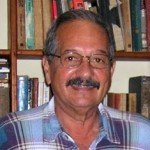
By Manuel E. Yepe
http://manuelyepe.wordpress.com/
Exclusive for the daily POR ESTO! of Merida, Mexico.
Translated and edited by Walter Lippmann.
The “wars against terrorism” waged by the United States in Iraq, Afghanistan and Pakistan in retaliation for the terrorist attack of September 11, 2001 in New York and Washington, have caused the death of half a million people, according to a study released by Brown University, which is based in Providence, Rhode Island, United States.
Brown is an important private center of advanced studies and research that is part of the Ivy League. Brown brings together the most accredited and exclusive private universities on the East Coast of the United States, where a high proportion of the political, intellectual, scientific and business leaders of that country graduate.
The surprising new study by Brown University reveals that between 480,000 and 507,000 people were killed during the U.S. Wars after September 11, 2011.
The study examined the three “war on terror” conflicts in Iraq, Afghanistan and Pakistan – the latter as an extension of the Afghan war and the focus of U.S. drone attacks.
The half a million deaths include those of combatants and civilians due to direct fighting and war violence. However, the number could be much higher, given that the study did not take into account the perhaps much higher number of civilians killed by infrastructure damage, such as the disablement of hospitals or water supplies, or other indirect results of war.
Tragically, civilians account for more than 50% of the approximately 500,000 deaths. The study further estimates that both U.S.-backed foreign forces and opposition militants each suffered more than 100,000 deaths.
As for U.S. forces, the report reveals that more than 60,000 U.S. soldiers were killed or injured in the three previously-mentioned conflicts after September 11. This includes 6,951 U.S. military personnel killed in Afghanistan and Iraq since U.S. invasions of those countries in 2001 and 2003.
As for the seventeen years of the so-called “forgotten war” in Afghanistan, the study concluded, according to the Voice of America (VOA), that in October 2018 deaths in Afghanistan numbered about 147,000 people, including Afghan security forces, civilians and opposition fighters. The figure also includes the deaths of 6,334 U.S. soldiers and contractors, as well as more than 1,100 allied soldiers.
In particular, Brown University’s study makes explicit reference to attempts by the U.S. government to “paint an optimistic picture” of wars, which has prevented the American public from knowing the true extent of the civilian casualties from the United States and other countries.
A recently-published study entitled Human Cost of the Post-9/11 Wars: Lethality and the Need for Transparency denounces the fact that: “Full accounting of the total death toll has been “prohibited by governments interested in painting a promising picture of perfect execution and progress” but also points out that war chaos and inaccessibility of dangerous places prevent narrower, more truthful and accurate accounting.
In fact, the total number of direct deaths in these wars may never be known. For example, tens of thousands of civilians may have died in retaking Mosul and other cities held by the Islamic State (ISIS), but most likely their bodies have not been recovered.
In addition, this figure does not include “indirect deaths”. Indirect damage is damage that occurs when the destruction or damage of wars has long-term consequences for the health of people in war zones. For example, due to disruption of access to food, water, sanitation, electricity or other infrastructure.
Estimates compiled in the past by independent monitoring groups and survey organizations have put the death toll in Iraq at more than one million people.
November 12, 2018.
MDC Birthday Greeting to Daniel Ortega

Cuban President congratulates Daniel Ortega on his birthday
«I join my brother President Maduro to that congratulation for the birthday of Brother Daniel Ortega. Congratulations, “he wrote on his Twitter account , shortly after the Venezuelan leader congratulated the president
 By Juventud Rebelde
By Juventud Rebelde
digital@juventudrebelde.cu
A CubaNews translation.
Edited by Walter Lippmann.
VIENTIANE, November 11.- Cuban President Miguel Díaz-Canel congratulated his Nicaraguan counterpart, Daniel Ortega, on his 73rd birthday this Sunday.
“I join my brother President Maduro in congratulating him on the birthday of his brother Commander Daniel Ortega. Congratulations,” he wrote in his Twitter account, shortly after the Venezuelan leader congratulated the president.
Diaz-Canel is touring Europe and Asia and is in Laos this weekend, PL said.
A Memorandum of Understanding on cooperation between the Bank of the Lao People’s Democratic Republic and the Central Bank of Cuba was signed on this day in the presence of President Miguel Díaz-Canel Bermúdez and his Laotian counterpart Bounnhang Vorachith.
In another tweet Díaz-Canel stated that “we celebrate in Laos the 50th anniversary of the National Liberation Forces Command. It was in the legendary caves of Viengxay, where our doctors consolidated the unbreakable friendship of our peoples.
Caster Semenya Challenges IAAF

Caster Semenya
The athlete who challenges the IAAF to allow her to compete as a woman without hassles

By Yunier Javier Sifonte Díaz
Graduated in Journalism from the Central University “Marta Abreu” of Las Villas in 2016. Journalist from Telecubanacán.
October 25, 2018
Translated and edited by Walter Lippmann for CubaNews.
In 2009 Caster Semenya astonished everyone with her triumph at the World Athletics Championships. She was 18 years old at the time and crowned a season in which she dropped seven seconds to her best time in the 800m flat. In Berlin, the mark of the final took her to 13th place of all time and meant the widest margin of a champion compared to her rivals. However, as soon as she passed the finish line, accusations began to haunt her.
“She is a man,” said Italian runner Elisa Cusma, and as a powder the media replied. “Master Semenya is he or she,” said one of the Spanish newspapers accredited in the German capital on the front page. Meanwhile, another prestigious European newspaper began the day with “Semenya’s sexual ambiguity”. Above Usain Bolt’s three records, the news became the success of the tournament.
Then the IAAF demanded gender tests to confirm that she was a woman. There they discovered that the South African woman did not have a uterus or ovaries, but she did have internal testicles and testosterone levels three times above normal. Caster Semenya suffered from hyperandogenism. The results came out 21 days after the gold medal. And in the midst of the public debate about her sexual identity, many forgot that she was a teenager who never questioned her status as a woman.
This is confirmed by her family in Limpopo, South Africa’s northernmost province and the land where she was born in January 1991. “She played like all girls,” the grandmother said in an interview with the BBC, “but she also liked to run and always excelled at it. For many people, however, Semenya has a man’s back, voice and face, and looks different to the naked eye.
Amid the controversy, the IAAF required her to limit her blood testosterone levels to 10 nanomoles per liter (nmol/L), a decision that forced the athlete to take medication to control her body. However, she still repeated the universal title in 2011 and won the Olympics a year later, but so much time fighting herself in the end turned out to be too much.
In 2013 she didn’t even attend the World Cup and two seasons later she finished the semifinals in last place. Her career wasn’t so successful anymore… until another intersex runner raised her voice.
It was Dutee Chand, an Indian sprinter unable to attend the Commonwealth Games by refusing to limit testosterone values. After her complaint, the Court of Arbitration for Sport (CAS) considered that there was no evidence capable of demonstrating the advantage of athletes with hyperandrogenism.
The return to the elite
The verdict removed the fourth year of regulations and Caster Semenya once again displayed all her power in Rio de Janeiro, the London World Cup and the Diamond League stops. Step by step, the South African rose in the historic ranking, won her first medal in the 1500m and won several nominations for best athlete of the season. But on April 26 of this year another IAAF decision threatened his career again.
According to the athletics governing body, athletes with hyperandrogenism would be forced to reduce their testosterone levels to 5 nmol/L by November 1, 2018. Otherwise, their only option was to compete as men, move to tests such as long-distance races and pitches or participate in divisional events for intersex athletes.
To support its proposal, the IAAF released a study which states that no woman should record more than 5 nmol/L of testosterone, “but those with differences in sexual development can have very high levels, which extends to the normal male range and even beyond. It was the conclusion that TAS did not find in its first research.
According to the report, “a higher proportion of testosterone increases muscle mass by 4.4%, strength by 12-26%, and hemoglobin by 7.8%. Experts estimate that the advantage of having circulating testosterone levels in the normal range of men rather than in the normal female range is greater than 9%.
When the analysis came out, the South African relived the same shock that accompanied her after her gold medal in 2009. Nearly a decade later, just two years after the last pill to control her body, her name was back in the headlines again. Although the rule doesn’t mention her directly, her face became one of the most wanted. And this time, far from the Berlin teenager, she decided to stand up and face everyone.
“I just want to run naturally, the way I was born. It’s not fair to be told that I have to change. It’s not fair for people to question who I am. I’m Mokgadi Caster Semenya, I’m a woman and I’m fast,” he said just three months ago when he filed an appeal with the Court of Arbitration for Sport to stop the controversial decision.
The athlete’s lawyers argued that the measure “is discriminatory, irrational and unjustifiable,” and that it violates the Olympic Charter and human rights. The IAAF, for its part, maintains its argument about the need to “create categories of competition that guarantee the success determined by talent, dedication and hard work, instead of other factors that are not considered fair or significant, such as the enormous physical advantages that an adult has over a child, or a male athlete over a woman.
However, the news of the last days is in the announcement of postponing for five months the implementation of the rule, in order to wait for the verdict of the CAS and thus avoid the delay of the process initiated by Semenya affects other athletes involved. Now everyone is waiting for the result before March 26th.
The new debate
“Prolonging uncertainty for athletes seeking to compete next year and beyond is unfair, so we have reached an agreement with the claimants. We have agreed not to enforce regulations against anyone until the regulations are respected. In return, they have agreed not to prolong the process. All athletes need this situation resolved as quickly as possible,” said IAAF President Sebastian Coe.
Although the director claims to have full confidence “in the legal, scientific and ethical basis of the Regulations and therefore I hope that the Court of Arbitration for Sport will reject these challenges”, this delay means hope for Semenya and for the South African Athletics Association.
According to the Guardian, the president of the African body, Aleck Skhosana, the rules will have a “discriminatory effect on female athletes” and his duty lies in “protecting all female athletes, because the regulations marginalize certain female athletes on the basis of natural physical characteristics and/or sex.
And there lies the key to the whole affair. For Semenya, its lawyers and many of its defenders, it is unfair to proscribe a person with physical or genetic conditions different from the rest, but who was born this way and never took prohibited substances or underwent any medical treatment to achieve it.
“No one questions the strides of Usain Bolt, the wingspan of Michael Phelps or the cardiovascular system of the Spanish cyclist Miguel Indurain. There is no such rule among men,” they say.
For its part, although the IAAF study recognizes that in tests such as hammer throwing – a specialty dominated by European and white athletes – the excesses of testosterone in blood offer an even greater advantage, the rule does not apply to those throwers. Many then question whether there is also discrimination on the basis of skin colour or geographical origin.
“It is always worrying, as a matter of law, when policies seem to be aimed at limiting the participation of a small group of people,” Suzanne Goldberg, director of Columbia University’s Center for Gender and Sexuality Law, told AFP. Her statements, along with those of the Women’s Sports Foundation and the organizers of the prestigious Wilma Rudolph Courage Award, shed light on an issue that does not yet have a clear end.
If CAS rejects the South African runner’s arguments and ultimately applies the decision, she must limit her testosterone or consider the option of climbing to 5,000 or 10,000 flat meters, tests where for now the rule is not effective. Meanwhile, if she wins the legal battle, it is almost certain that the world will continue to see the strides and master races of a girl who for a long time has struggled not to lose her essence as a woman.
Youth and Beauty At All Costs?

Youth and Beauty at All Costs?
Since 2011 there has been an increase in the number of people attending plastic surgery services in Cuba, who should be aware that this type of intervention is not without risks.
Posted: Saturday 29 September 2018 | 10:15:43 pm.
Author: Ana María Domínguez Cruz
digital@juventudrebelde.cu
A CubaNews translation.
Edited by Walter Lippmann.

Since 2011 many people have turned to plastic surgery services. Author: Falco Published: 29/09/2018 | 10:03 pm
Aesthetics and health. The debate is still endless because the search for beauty, beyond the superficial, can also be a guarantee of emotional health, psychological stability, high self-esteem and general well-being.
Plastic surgery professionals also work in the field of reconstructive surgery and caumatology, and say that in the first place the safety of the procedure and the training of the professionals who put it into practice should be paramount.
According to data released at the 2nd Congress of the Cuban Society of Plastic Surgery and Caumatology, held from September 5 to 7 on the Island, from 2001 to 2016, 309,469 plastic surgeries were performed in Cuba The majority (200,508) were aesthetic and the rest reconstructive.
They added that there is a considerable increase every year starting in 2011, which places us in line with the rest of the world, where each time the number of people who come or need this specialty grows.
Dr. Ariel C. Prada, a third-year resident in Plastic Surgery and Caumatology at the Hermanos Ameijeiras Clinical Surgical Hospital, recently arrived at the Multimedia Editorial Office of Juventud Rebelde to answer questions related to the discipline in the country, its potentialities and perspectives, as well as its risks and complications.
The professor instructor and editor of the magazine Cirugía Estética y Reparadora [Esthetic and Reparative Surgery] clarified not a few doubts of our readers -some teenagers and young people-, from whom we offer a selection.

Dr. Ariel C. Prada, third year resident in Plastic Surgery and Caumatology, Hospital Clínico Quirúrgico Hermanos Ameijeiras. Photo: Roberto Ruiz
Lissa: What are all the plastic surgery services that we can access for free?
Ariel C. Prada (ACP): You can access all plastic surgery services (including cosmetic surgery and reconstructive surgery) free of charge, after a medical assessment to determine whether or not you qualify for that intervention. There are procedures in which alloplastic materials are used (breast implants, buttocks, etc.) that in the case of cosmetic surgery must be acquired by the patient, having first the indication of its model and volume by the plastic surgeon.
Susel: Is it necessary to be of legal age to access an operation or is it only possible with the authorization of the legal guardian?
ACP: Like any medical-surgical procedure it has a legal background and risks. If you are a minor must have the approval of parents or legal guardians. We do not know the nature of the procedure you wish to be performed, but we always recommend that, if it is not strictly necessary, you wait until the age of majority, either to seek better aesthetic results or because they are purely elective surgical interventions (cosmetic surgery), not essential for your life. Remember that undergoing surgery, in this case, is a very personal decision that requires full awareness and maturity.
Hope: I want to remove the “crows feet”, a little fat from my belly, my neck wrinkles … How many cosmetic surgeries can a person do, and how long should you wait between one and another?
ACP: There is no specific number of cosmetic or reconstructive surgeries that can be performed on a person. Above all, it must be evaluated by a specialist, who will determine, according to his opinions, which is the best aesthetic option, according to factors as varied as the type of patient, age, basic diseases and magnitude of the procedure, among others.
“Our specialty is a complement to improve the quality of life of people. Thus, it in no way replaces healthy habits such as a good diet, avoiding toxic habits or frequent physical exercise. In fact, many times our intervention is not necessary or its magnitude decreases, with much better results. The patient must be aware and responsible for their own health, to have lifestyles that maintain the results of the procedure performed.
Yaima: I have black skin, am 52 years old… Does race influence this type of surgery?
ACP: In medicine, and particularly in plastic surgery and caumatology, one of the elements taken into account is the racial biotype. Age is also a factor that is considered depending on the patient’s desire.
Iris: How is the procedure so that a woman who was operated on a radical breast can have access to the reconstruction of this part of her body? Where should she go?
ACP: Surely you were seen in a center with oncology service. Your oncologist, after considering that you are free of the disease (at least for a year) can refer you to a reconstructive surgery service, either in an oncology hospital or clinical-surgical, to begin the process of breast reconstruction which can be done in several stages.
“The National Breast Cancer Program contemplates the free reconstruction of all women affected by this pathology, with quality and first-class breast implants in centers such as the National Institute of Oncology and Radiobiology (Havana), Hermanos Ameijeiras Clinical-Surgical Hospital (Havana) and Conrado Benítez Oncological Hospital (Santiago de Cuba). You should consult with your oncologist in which center, according to the regionalization of health services, you should be treated.
Carmen: Those of us in our third age can opt for simple procedures, such as, for example, one that allows us to lift our drooping eyelids?
ACP: Although there are “simple procedures”, all require the expertise, experience and “aesthetic vision” of a plastic surgeon. We mean that there are sick people, not diseases (an old medical adage). Therefore, each treatment must be individualized, because what a patient requests is not always the best aesthetic or technically possible option.
“In the elderly, we must take into account the compensation of their basic illnesses, because we are talking about purely elective procedures, in which the risk must be minimal and the benefit, the highest possible.
Yeny: What practices should a patient follow after having a lipectomy*? How long should she wait to perform physical exercises and which are the most recommended? Is it normal to feel punctures in the abdominal region two years after this type of surgery has been performed?
ACP: First of all, you must have followed the indications of the plastic surgeon who operated on you, because s/he knows the characteristics of the patient, the details of his procedure and therefore the limitations and possible evolution, among others.
“Generally, three months after the operation, as long as they have not been complex dermolipectomies, patients can gradually resume themselves into their lives fully, without excesses. Physical exercises should be dosed and increased progressively. Aerobes and any activity that tones the muscles improve the results of the procedure. Consult your surgeon about the symptomatology presented, because s/he will surely offer you a more exact explanation and a solution.
The returning breast
Surgeries do not replace healthy lifestyle habits, but they are a choice many make.
When we speak of plastic surgery, the term also includes reconstructive surgery, which guarantees not only an aesthetic result, but also the return of function to the affected area.
In this sense, Dr. Yamilé León Rodríguez, who works at Hermanos Ameijeiras Hospital, tells Juventud Rebelde that oncological, traumatic or congenital deformities in the face, in the breast due to cancer and ulcers in dissimilar parts of the body, among others, are treated in this way.
“We have a multi-disciplinary breast cancer care group that includes oncologists, mastólogos, radio-oncologists, imageologists, psychologists, psychiatrists and specialists in reconstructive plastic surgery, who enter the process after it has been decided how the ablative surgery of the patient will be conducted.
“The defect to be corrected may be in the breast, when a partial or total removal of an organ or body tissue is performed in a radical mastectomy, or to correct a defect that remains in the chest wall, as a result of an ablation of a large tumor.
“We have developed several techniques, including reconstruction with the local tissues of the breast, with muscles, especially the abdominal rectum and the broad dorsal, as well as through flaps obtained from the abdomen, or the novel technique applied in the country of the sentinel ganglion, which determines the degree of spread of cancer.
León Rodríguez points out that patients of different ages, from 18 to 85 years old, have been treated with this type of aesthetic reconstruction. “The results show that it is not mandatory to perform total exeresis and that the subsequent reconstruction, with or without the use of prostheses, gives the woman back one of the classic attributes of femininity”.
Perfect face!
Rhinoplasty is a complex but generally not life-threatening procedure.
Dr. Julio Cesar Galvez Chavez recognizes that in the desire to look younger, more and more patients come to his office. They should know that there are also selection criteria for cervicofacial rejuvenation surgeries.
“If there are signs of aging, then we can consider this type of surgery. We can find these elements in young people, perhaps because they have very white skin. In general, however, we perform them in patients over 40 years and up to 60, although the age limit is not as determinant as physical conditions and health.
“Many people believe that this is a magical intervention that will return them to the freshness they had at 15 years. This isn’t so, because, although it is guaranteed to make you look younger, you can’t turn back the clock.
The fundamental motivations for performing a surgery in the environment of cervicofacial rejuvenation are related to the fall of the eyebrows, the appearance of horizontal or transverse wrinkles in the eyebrows, the excess of skin on the eyelids and the appearance of fat pockets in that area, the loss of the contour of the jaw and the presence of the so-called marionette lines, the fall of the chin and the loss of angularity in the neck, among others.
Gálvez Chávez is also an expert in rhinoplasty, an aesthetic procedure indicated for those who wish to modify the size and shape of their nose as well as to improve their respiratory function in case of deformities in their septum.
“We perform reductive rhinoplasty in those noses of large dimensions and augmentative for flat or underdeveloped. In addition, we can make other procedures to model or perfect the features according to aesthetic patterns worldwide, either in the tip of the nose, the wings, the back, the nostrils and in general in all regions of the nose.
“Rhinoplasties are not recommended for people over 40 years of age because the skin’s ability to adapt to structural changes is important. This is most noticeable before the age of 30,” says the specialist, who notes that, although vital rules of care must be respected after rhinoplasty, it is not a life-threatening surgery.
Molding the body
How many people yearn for an aesthetic surgery after which they will look slim and slender? Dr. Heizel Escobar Vega, a specialist at the Hospital Clínico-Quirúrgico Hermanos Ameijeiras, states that this is the main reason why patients come to her practice. They ignore the fact that liposculpture is not a method for treating obesity.
“Liposculpture is the surgical treatment we perform to treat the areas of the body where fat deposits are found, such as the abdomen, the trochanteric regions and the arms, among others. Not only is it a question of removing those fat accumulations, but also of performing the lipo-injection in other areas in which they are desired.
“With this procedure, we obtain a corporal mold, as much in men as in women. Lately, they want to lose fat, in the abdomen and lumbar regions. They also request high definition surgery to obtain the well-known “squares”, an increased request also in recent times in the female population”.
Escobar Vega insists that not everyone can be a candidate for this surgical intervention. “We are rigorous in the selection of patients. Although people generally think that it is a simple surgery, due to the fact that it is among the most performed globally, it is certainly one of the riskiest and has the highest mortality associated with it, depending on the time and volume of fat extracted. Moreover, its realization leads to the modification of the metabolic, biochemical and hepatic mechanisms of the organism.
“Follow-up after surgery is essential, and the patient must respect the measures indicated by his attending physician.
Dr. María del Carmen Franco Mora is a specialist at the Juan Bruno Zayas General Hospital in Santiago de Cuba. She explains that the demand for gluteal lipo-injection has grown, a procedure that requires prior liposuction or liposculpture, from which the fat extracted is injected into that area of the body.
“The most frequent general complications are associated with the most feared, ranging from fatty and pulmonary thromboembolism, septic shock and severe anemias, to local infection and hematomas, among others.
“The criteria established for the classification of the patient must be very respected. We do not operate on people with a body mass index above 30 until they lose weight before, nor on those with a history of thrombotic diseases in lthe ower limbs or with the presence of varicose veins, nor on those who take oral contraceptives, among other exceptions”.
The Bad Memory of the Good Media
The Bad Memory of the Good Media
By Iroel Sanchez, from La Pupila Insomne
November 13, 2018
Translated and edited by Walter Lippmann for CubaNews
CNN journalist Jim Acosta is in the news because he had an incident with U.S. President Donald Trump during a press conference at the White House. Acosta first asked about President Donald Trump’s description of the caravan of Central American immigrants seeking to enter the United States as an “invasion”. Acosta accused Trump of demonizing them and in the exchange, a White House intern tried to remove the microphone but that time Acosta resisted and asked a second question about “the Russian investigation.”
As a result, Jim Acosta was expelled from the press conference and his White House credential was withdrawn. This has generated thousands of news dispatches. What none of those reports has remembered is that, when Jim Acosta was in Havana, “embedded” in the delegation headed by then-U.S. President Barack Obama who visited the island, he had another tense dialogue. That one was with Cuban leader Raul Castro, but no one tried to take his microphone or put him out of the room:
Jim Acosta: “Why do you have Cuban political prisoners and why don’t you release them?”
Raul Castro: “Give me the list of political prisoners now to release them. Or give me a list of names if there are political prisoners. And if there are those political prisoners, before nightfall they are going to be released.
Needless to say, Acosta did not turn in any lists, but no one expelled him from Cuba because of it.
CNN’s concern, and that of the American press in general, for political prisoners and liberties, and also its hostility toward Donald Trump, is a little selective. During his visit to Israel, which coincided with the numerous and harassed demonstrations by Palestinians in support of their prisoners in Israeli jails, nothing was asked of the Israeli President or said in those media about political prisoners in Israel.
As for the “invasion” of Central American emigrants, mainly Hondurans, neither Acosta nor CNN, nor any U.S. media has alluded to the responsibility of the United States for the state of poverty, social crisis and violence faced by the countries of the so-called Northern Triangle (Guatemala, El Salvador and Honduras), who have been devastated by decades of dirty war and neoliberalism encouraged by Washington.
Particularly in the case of Honduras, when it began a path to address social needs, integrating into the education and health programs of the Bolivarian Alliance for the Peoples of Our America (ALBA) was impacted in 2009 by the military coup that began the U.S. counteroffensive in Latin America aiming to re-establish its hegemony in the region. That was led by Barack Obama’s White House, who by the way has been the U.S. president who has deported more immigrants than any other in history.
In Honduras, 15 journalists were murdered after that coup supported by the United States.There is even a video in which the murder of an informant is ordered, after the uncomfortable question to a powerful businessman linked to the coup plotters (see 10:25 minutes of the documentary The Deadliest Place in the World for a Journalist: which has been on the Internet since October 2011), but neither Democrats nor Republicans demonstrated on the matter, much less CNN nor any US corporate media. https://www.youtube.com/watch?time_continue=633&v=dvg1JcvC3KM
“Send someone to kill him.”
One thing that Trump, Jim Acosta, Barack Obama, CNN and all the “free press” agree on is that the United States, unlike Cuba, is a country with democracy and freedom of expression, but more and more common things happen there in the countries classified as “banana republics,” a term coined in his volume of stories Cabbages and Kings by the American writer O. Henry to refer to Honduras, something that is the result of repeated military interventions and economic looting, along with the export of violence, armed gangs and corruption, as well as the export of violence, armed gangs and corruption.
But what is happening in Trump’s United States, with scandals over the president’s relations with prostitutes, dismissals of officials for spurious motives, and even brothel owners who win elections even after death, surpasses novels like The Autumn of the Patriarch or the Resource of the Method. Of course, these are conclusions too deep to be told by Jim Acosta or CNN, and, if they were to be addressed, it would be to say that it is the exceptional result of the management of an irresponsible madman, never of a system where he sends the money and thanks to which a tycoon who runs a country as if it were his company was able to become President.
Stan Lee, 1922-2018

Comics legend Stan Lee, creator of Hulk and Spiderman, dies at 95.
Published in: USB Channel
November 12, 2018
Translated and edited by Walter Lippmann for CubaNews.
The legend of the comic Stan Lee, responsible for emblematic characters such as Spiderman or Hulk, died this Monday in Los Angeles (USA) at the age of 95, reported the media specialized in news of famous TMZ.
“My father loved all his fans. He was the greatest and most decent man,” Joan Celia Lee, the artist’s daughter, told TMZ.
The author had suffered numerous health problems in recent times and had lost Joan Lee, the woman he was married to for nearly seven decades, in 2017. “And I want you to know that I still love you all,” said the comic book editor in one of his final videos.
These are some of his best-known creations for the Marvel company:
Spider-Man [con Steve Ditko]
It’s often thought that Stan Lee invented all the famous Marvel Comics superheroes. The truth is that he created many, but usually with the essential contribution of legendary cartoonists. The most famous case: Spiderman, conceived together with the cartoonist Steve Ditko for Amazing Fantasy magazine #15 (1962). It was Lee who insisted that the main character be a teenager, busy with everyday issues like paying rent and courting his beloved Mary Jane.
The Avengers [with Jack Kirby]
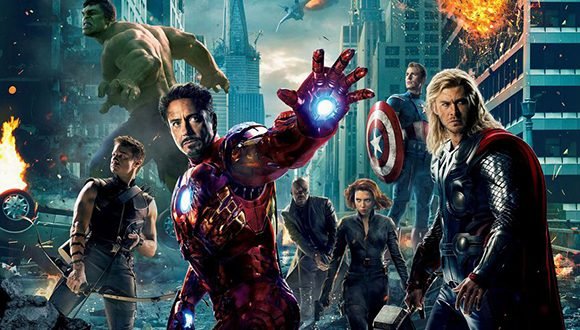 On April 27, 2018, the film Avengers: Infinity War was released, inspired by a group of some of Marvel’s most important superheroes. Lee created them with legendary artist Jack Kirby for The Avengers #1 (1963). His original lineup included only five characters: Thor, Iron Man, Hulk, Ant-Man and The Wasp.
On April 27, 2018, the film Avengers: Infinity War was released, inspired by a group of some of Marvel’s most important superheroes. Lee created them with legendary artist Jack Kirby for The Avengers #1 (1963). His original lineup included only five characters: Thor, Iron Man, Hulk, Ant-Man and The Wasp.
Hulk [with Jack Kirby]
Works such as The Strange Case of Dr. Jeckyll and Mr. Hyde, by Robert Louis Stevenson, are a clear inspiration for Hulk’s character. But the originality of the character is that what activates Dr. Bruce Banner to become the incredible Hulk is anger. The comic strip is also an alert to the dangers of scientific experimentation. It was created by Lee and Jack Kirby for The Incredible Hulk #1 (1962).
Iron Man [with Don Heck, Jack Kirby and Larry Lieber]
 The film Iron Man (2008) started the so-called Marvel Cinematographic Universe. Played by Robert Downey Jr., Iron Man is one of cinema’s most successful superheroes and the undisputed leader of the Avengers. His origins are curious, as Tony Stark is initially a capitalist with few scruples and problems with drinking, who sells weapons. A splinter near his heart forces him to wear armor all the time, with which he decides to fight evil. It was created by Lee along with artists Don Heck, Jack Kirby and his younger brother, Larry Lieber, for Tales of Suspense #39 (1963).
The film Iron Man (2008) started the so-called Marvel Cinematographic Universe. Played by Robert Downey Jr., Iron Man is one of cinema’s most successful superheroes and the undisputed leader of the Avengers. His origins are curious, as Tony Stark is initially a capitalist with few scruples and problems with drinking, who sells weapons. A splinter near his heart forces him to wear armor all the time, with which he decides to fight evil. It was created by Lee along with artists Don Heck, Jack Kirby and his younger brother, Larry Lieber, for Tales of Suspense #39 (1963).
X-Men [with Jack Kirby]
The X-Men is a group of superheroes who have in common that they are mutants; they did not acquire their powers by accident or extraterrestrial origin, but by a genetic factor. The X-Men are the perfect metaphor for intolerance towards those who are different. The original members were Cyclops, Beast, Angel, Jean Grey, Ice-Man and Professor X. It was created by Lee with Jack Kirby for The X-Men #1 (1963), although it is commonly considered that the X-Men lived their best time when Len Wein and Chris Claremont took over the reins of the cartoon.
The Fantastic Four [with Jack Kirby]
It was with the Fantastic Four that Marvel Comics skyrocketed in sales and ushered in a golden era for this publishing label. Stan Lee and Jack Kirby set out to create a new group of superheroes, with unpublished characters. The Fantastic 4 were a success for their novelty: they had no secret identities and the dynamics of its members was that of a family. It debuted in Fantastic Four #1 (1961) and many consider that it represents the best collaboration between Lee and Kirby.
(With information from EFE and CNET)
Leonardo Padura Wins Barcino Prize

Leonardo Padura wins the Barcino Historical Novel Prize
October 10, 2018
Translated and edited by Walter Lippmann for CubaNews.
The Cuban writer Leonardo Padura has won the International Prize for Historical Novel Barcino, which is awarded in the framework of the Barcelona Historical Novel literary contest, which this year reaches its sixth edition, as reported today by the Institut de Cultura de Barcelona, organizer of the event.
The jury has decided to award the prize to Padura because his works “are novels written with the resources of the black genre that become existential, social and, naturally, historical stories”.
“In the same way that we learned about the Spanish Transition with Pepe Carvalho and much of the history of the United States in the 20th century with Harry Conejo Angstrom by John Updike, the best way to walk through revolutionary Cuba is in the company of the great Mario Conde”, the protagonist of Padura’s novels, added the jury.
Leonardo Padura (Havana, 1955) received the Premio Princesa de Asturias de las Letras in 2015 for his work as a whole and is internationally known for the series of novels about the detective Mario Conde. Padura is also the author of other outstanding literary works such as La novela de mi vida, Herejes, the story book Aquello estaba deseando ocurrir and El hombre que amaba a los perros, about the figure of Trotski and his murderer, Ramón Mercader.
Padura will receive the International Prize for Historical Novel Barcino next November 8 at the Saló de Cent of Barcelona City Council. The jury of the sixth Barcino Historical Novel International Prize is composed of journalist Òscar López, novelist Care Santos, cultural journalist Sergi Doria, writer Enric Calpena and the curator of the Barcelona Historical Novel, Fèlix Riera, who is president of the jury. This prize has previously been awarded to the writers Lindsey Davis, Santiago Posteguillo, Simon Scarrow, Christian Jacq, and Arturo Pérez-Reverte.
(Con información de La Vanguardia)
An American Tragedy Multiplied

An American Tragedy Multiplied
Ex-marine kills 12 people in a California bar and apparently commits suicide.
Posted: Thursday 08 November 2018 | 10:17:27 pm.
 By Juana Carrasco Martin
By Juana Carrasco Martin
juana@juventudrebelde.cu
A CubaNews translation.
Edited by Walter Lippmann.

The National Rifle Association champions like Pedro for his house. Author: wp Published: 08/11/2018 | 10:05 pm
It’s not Theodore Dreiser’s novel, An American Tragedy, but murder is in the plot and it’s a real tragedy that shakes American society almost daily. Thirteen people, including the attacker, died when the victims assumed that on Wednesday night they would celebrate with country music at the university students’ favorite bar in the town of Thousand Oaks, a suburb of affluent residents northwest of Los Angeles, considered the third safest in the United States.
In cold blood, as Truman Capote’s documentary novel is titled, the Borderline Bar & Grill killer, a 28-year-old ex-marine suffering from post-traumatic stress, indiscriminately fired at least three extended magazines of his Glock 21, 45 caliber automatic pistol after throwing smoke grenades. The gun had been legally purchased…
Twenty-two other people were injured by bullets or injuries during the hasty escape to avoid the shots of Ian David Long, a young man described as angry and irrational by the police who came to his house last April for complaints of disturbance of order and were already known to the authorities by two other violent altercations.
At the first call for help, at 11:20 p.m., a sergeant from the sheriff’s office and an officer from the Road Patrol came immediately to try to “neutralize the threat. They were shot and Sergeant Ron Helus fell, with 29 years of service and only five months to his retirement.
“It’s a horrible scene. There’s blood everywhere,” Sheriff Dean told reporters. Some of the celebrating students were known to have survived the massacre at the Harvest Music Festival in Las Vegas, a massive country concert in which 58 people died and more than 500 were injured on October 1, 2017, under the gunfire of Stephen Paddock, a sober and healthy 64-year-old man.
Just ten days before the new massacre, the “safe” Thousand Oaks, an ultra-massacre of 11 faithful at a synagogue in Pittsburgh, Pennsylvania on Oct. 27; and just a week ago another individual fired on a yoga gym in Tallahassee, Florida, killing two women, injuring others.
According to the Gun Violence Archive – a nonprofit group that tracks these incidents on a daily basis – between January 1 and October 31, 2018, there have been 47,467 firearm incidents and 12,183 people killed, 23,759 injured, 560 of the fatalities were children, 2,370 teenagers, 1,701 were armed home invasions, 1,502 incidents used weapons as a defense, 1,332 were unintentional shootings and 301 mass shootings.
Already those numbers are history past, the numbers have increased. In the first eight days of this November, the United States has witnessed six mass shootings (description for those occurrences in which four or more people have died, not including the gunman), bringing the mass shootings to 307.
Alarms ring again and again, an increasing proportion of Americans are calling for laws that effectively limit or control gun ownership – there are at least 310 million in the possession of the nearly 325 million people, approximately 89 weapons for every 100 people, and a total of 48 percent of the 650 million weapons held by civilians worldwide.
Only 27 words of their Constitution give them that “right” and justify a culture of extreme violence, which is officially deployed with organization and participation in almost every war that occurs in today’s world.
However, President Donald Trump and many of the legislators are deaf to the petition.
After the Thousands Oaks event, Trump, in his usual way of “facing” the problems, immediately tweet: “I have been fully informed of the terrible shooting in California (…) God bless the victims and relatives of the victims. Thanks to law enforcement.
The National Rifle Association champions like Peter for his home. In 2017 weapons were sold in the United States for $41.93 billion, the same revenue as Facebook. Everything is resolved.
At Least 11 Killed in Pittsburgh Synagogue Shooting

At Least 11 Killed in Pittsburgh Synagogue Shooting
Trump calls for strengthening the death penalty and says if the temple had had armed protection, the tragedy would not have occurred.
Posted: Saturday 27 October 2018 | 07:05:43 pm

By Juventud Rebelde digital@juventudrebelde.cu
A CubaNews translation.
Edited by Walter Lippmann.

The attack is considered a hate crime and constitutes a federal violation. Author: Taken from the Internet Published: 27/10/2018 | 06:58 pm
Trump calls for strengthening the death penalty and says that if the temple had had armed protection, the tragedy would not have occurred.
The gunman also shot at the police officers who came to face him and four of them were also wounded, local KDKA reported. It described the suspect of this hate crime as a white man with a beard, 48 years old, who was wounded in his confrontation with the SWAT team.
The attack occurred during Shabbat services at the synagogue that was filled for that weekend ceremony, and the perpetrator apparently lives in a nearby apartment. Police are also investigating whether Bowers announced his intentions in social media on Saturday morning. His account appears to have been withdrawn.
One of the messages on that account said, “HIAS [the Hebrew Immigrant Help Society] likes to attract invaders to kill people. I can’t sit back and watch my people get killed. Screw on your optics, I’m going in.
The Gab.com website, which describes itself as “The Home of Online Freedom of Expression,” rejected claims that it was responsible for the shooting after it confirmed that the name identified in media reports as the suspect matched the name of an account on its platform.
The site’s statement states that “Gab.com’s policy on terrorism and violence has always been very clear: we have no tolerance for it. Gab unequivocally disapproves and condemns all acts of terrorism and violence. This has always been our policy. We are saddened We are saddened and disgusted by the news of violence in Pittsburgh and we keep the families and friends of all victims in our thoughts and prayers.
The FBI is spearheading the investigation into what happened because it is considered a hate crime and a federal violation.
According to KDKA Pittsburgh, President Donald Trump, who advocates the possession of weapons in civilian hands and refuses to endorse any legislation that limits it, said that if the synagogue had had armed protection, things would have been different.
The president added, “It’s a terrible thing that’s happening with hatred in our country and, frankly, all over the world, and something must be done.
Speaking to reporters at Andrews Air Force Base on the way to Indianapolis, Trump added, “I think one thing we should do is strengthen our laws on the death penalty. When people do this, they should get the death penalty and not have to wait years and years.
HispanTv cites statistics provided by the Gun Violence Archive (GVA) on gun violence in the United States so far in 2018, with 11,980 people killed and 23,332 injured in shootings.
The Resurgence of Political Parties
The Resurgence of Political Parties

By Manuel E. Yepe
http://manuelyepe.wordpress.com/
Exclusive for the daily POR ESTO! of Merida, Mexico.
Translated and edited by Walter Lippmann.
In the West in general, and in Europe in particular, there is a resurgence of political parties. Both old parties such as the British Labour Party and new ones such as Podemos in Spain and Insumiso in France have experienced spectacular increases in recent years, with notable organizational innovations.
Paolo Gerbaudo, a British sociologist at King´s College and a specialist in social movements and parties, attaches great importance to this renaissance. This is because, for many years, sociologists and political scientists have predicted, almost unanimously, that political parties were losing preeminence in highly diversified, globalized digital societies.
Indeed, the current revival of the European left has disproved such forecasts. Digital technology there has not supplanted the party and, rather, party activists have used their advances to develop innovative mechanisms to attract citizens, while still asserting that political struggle is their main working tool.
The revitalization of political parties in the old continent has become evident, in the first place, by an increase in membership. By contrast, many historic European parties have had a decrease in membership since the decade of the eighties of the twentieth century, Gerbaudo says.
In Britain, the Labour Party is close to reaching 600,000 members, having bottomed out with only 176,891 in 2007 at the end of Tony Blair’s leadership. In France. Jean-Luc Melenchon’s Insumise France movement has 580,000 supporters, making it the largest party in France just a year and a half after its founding. In Spain, Podemos, founded in 2014, has more than 500,000 members, more than twice as many as the traditional socialist party.
Even in the United States, a country that for most of its history has lacked socialist parties with mass militancy in the European sense of the term, a somewhat similar trend can be observed in the Democratic Socialists of America (DSA). Today the country’s largest socialist formation, it has grown to 50,000 members following Bernie Sanders’ candidacy for the 2016 Democratic nomination.
According to Gerbaudo, this spectacular growth in the number of members of “moderate” left parties, many of which are new formations, contrasts with the forecasts made until recently by many political scientists. Between the 1990s and the period immediately prior to the 2008 financial crisis, many academics agreed in predicting the ultimate demise of political parties. Amid growing voter apathy and shrinking membership, political parties were seen by many as a relic of the past, while the postmodern theory of the “end of history” professed that the party’s history – a decisive historical factor in most traditional Marxist theories – was over.
The scholar at King´s College in Britain argues that Nazism and Stalinism demonstrated the extent to which a party could become a machine bent on manipulating its members and imposing unwavering obedience. But as serious and problematic as that was, the way in which this critique was combined with long-standing liberal resentment against political parties, driven by an undemocratic fear of the organized masses and their demands for democratic control and economic redistribution made it worse.
This liberal discourse of criticism of the political party goes back to the origins of modern democracy. They attacked political parties for subjecting the individual to obedience and uniformity, arguing that instead of serving the general interests of society, parties ended up defending the narrow interests of one faction.
In neo-liberal times, this concern for individual freedom has found a new way to express itself in the over-valuation of entrepreneurship and the spontaneity of unregulated market forces. This makes all forms of collective organization seem illegitimate impediments to private property and individual freedom.
Ironically, says Gerbaudo, much of the rejection people feel today of political parties is a product of neo-liberal ideology, and of the way in which, during the 1990s and 2000s, this ideology facilitated the transformation of the old mass parties of the industrial age into new “liquid parties” in the style of American “professional/electoral parties,” whose cynicism has been captured in the public imaginary by series of TV programs.
Ironically, says Gerbaudo, much of the rejection people feel toward political parties today is a product of neoliberal ideology, and the way in which during the 1990s and 2000s this ideology facilitated the transformation of the old mass parties of the industrial era into new “liquid parties” in the style of American “professional/electoral parties. ” Their cynicism has been captured in the public imagination by television series such as HOUSE OF CARDS and THE THICK OF IT, with spin doctors and interviewers and communication consultants who have an advantage replacing the old apparatchiks and party cadres.
October 29, 2018.
This article may be reproduced by quoting the newspaper POR ESTO as the source.
Subscribe to Blog via Email
| M | T | W | T | F | S | S |
|---|---|---|---|---|---|---|
| 1 | 2 | 3 | 4 | 5 | 6 | 7 |
| 8 | 9 | 10 | 11 | 12 | 13 | 14 |
| 15 | 16 | 17 | 18 | 19 | 20 | 21 |
| 22 | 23 | 24 | 25 | 26 | 27 | 28 |
| 29 | 30 | 31 | ||||

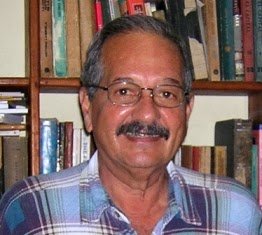

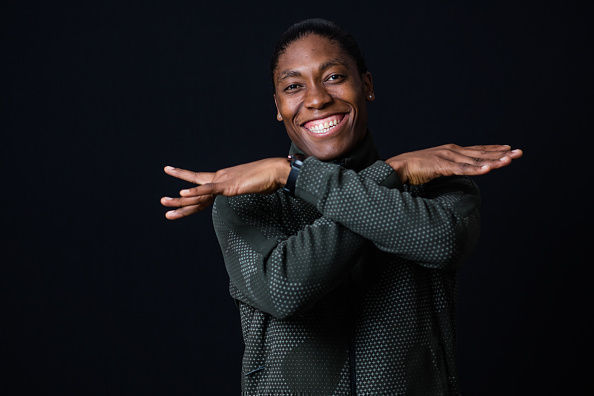






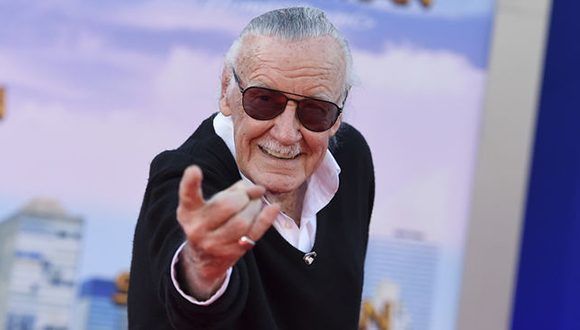



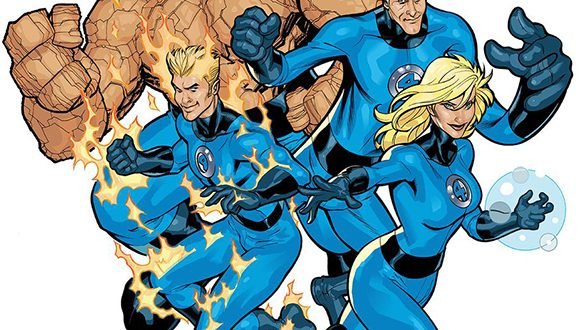
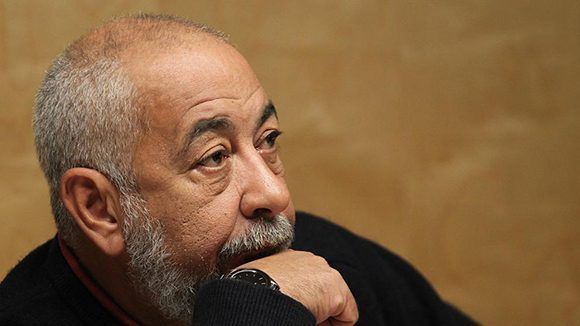
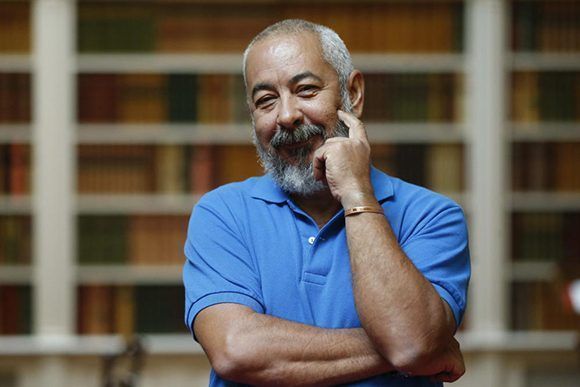
You must be logged in to post a comment.